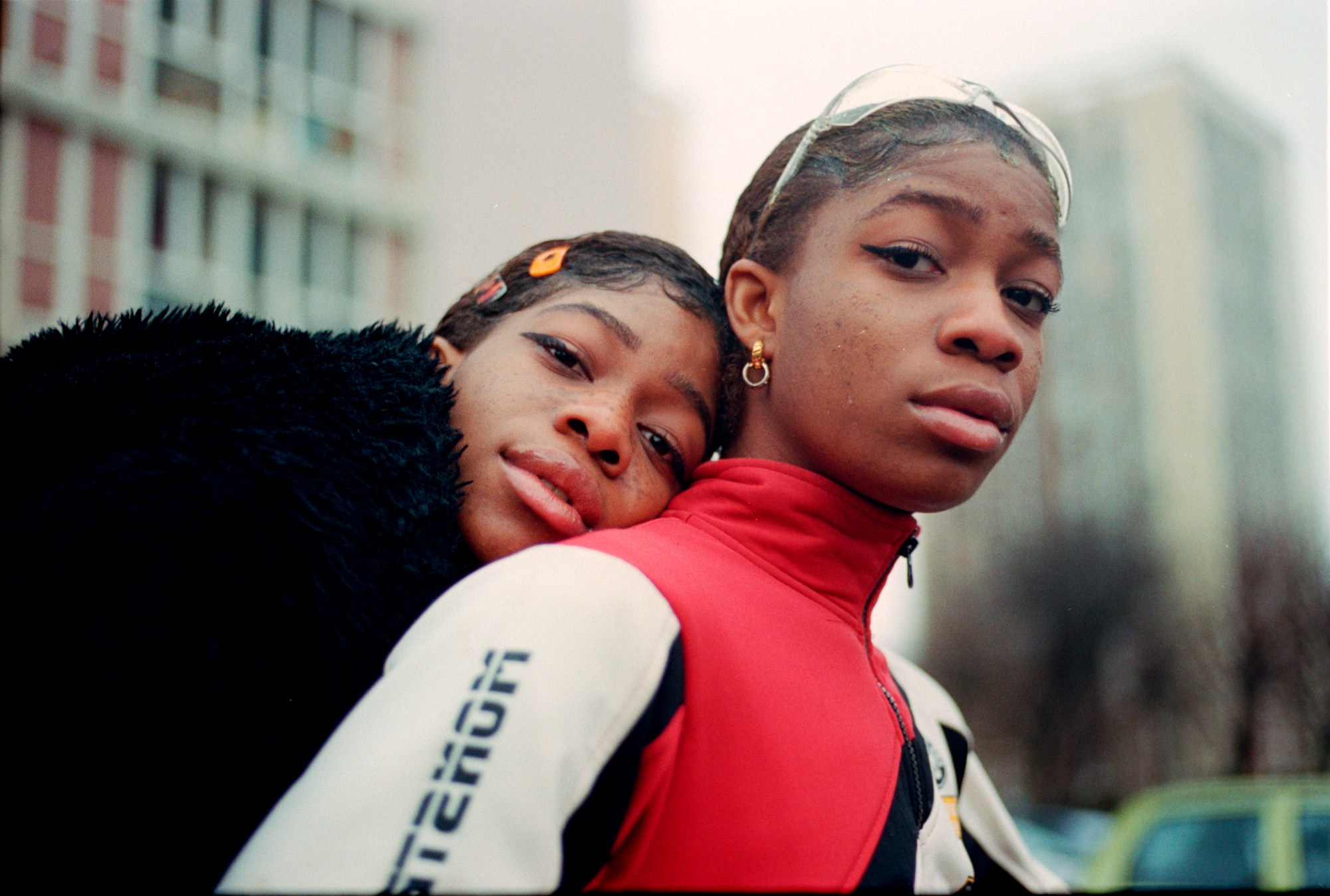For the last three years, Brooklyn-based gallery Red Hook Labs has hosted a summer group show featuring young emerging photographers from all over the world. Through an open call, they scout the most extraordinary, yet unsigned talent, and this year, i-D’s own Senior Fashion Editor at Large Ib Kamara, along with Kim Jones, Edward Enninful, Jimmy Moffatt, and more, selected 25 photographers to be featured in the exhibit. Each will be mentored by a member of the juror and one will be selected by Dazed to shoot an editorial for their F/W issue. Last year’s exhibition featured none other than Tyler Mitchell, Chase Middleton, and Chris Smith. After the opening in New York on July 11 to 28, Labs New Artists III will travel to Oslo and Milan.
i-D caught up with a few of the visionary young photographers to find out what’s inspiring them right now and what advice they’d pass on to their peers.
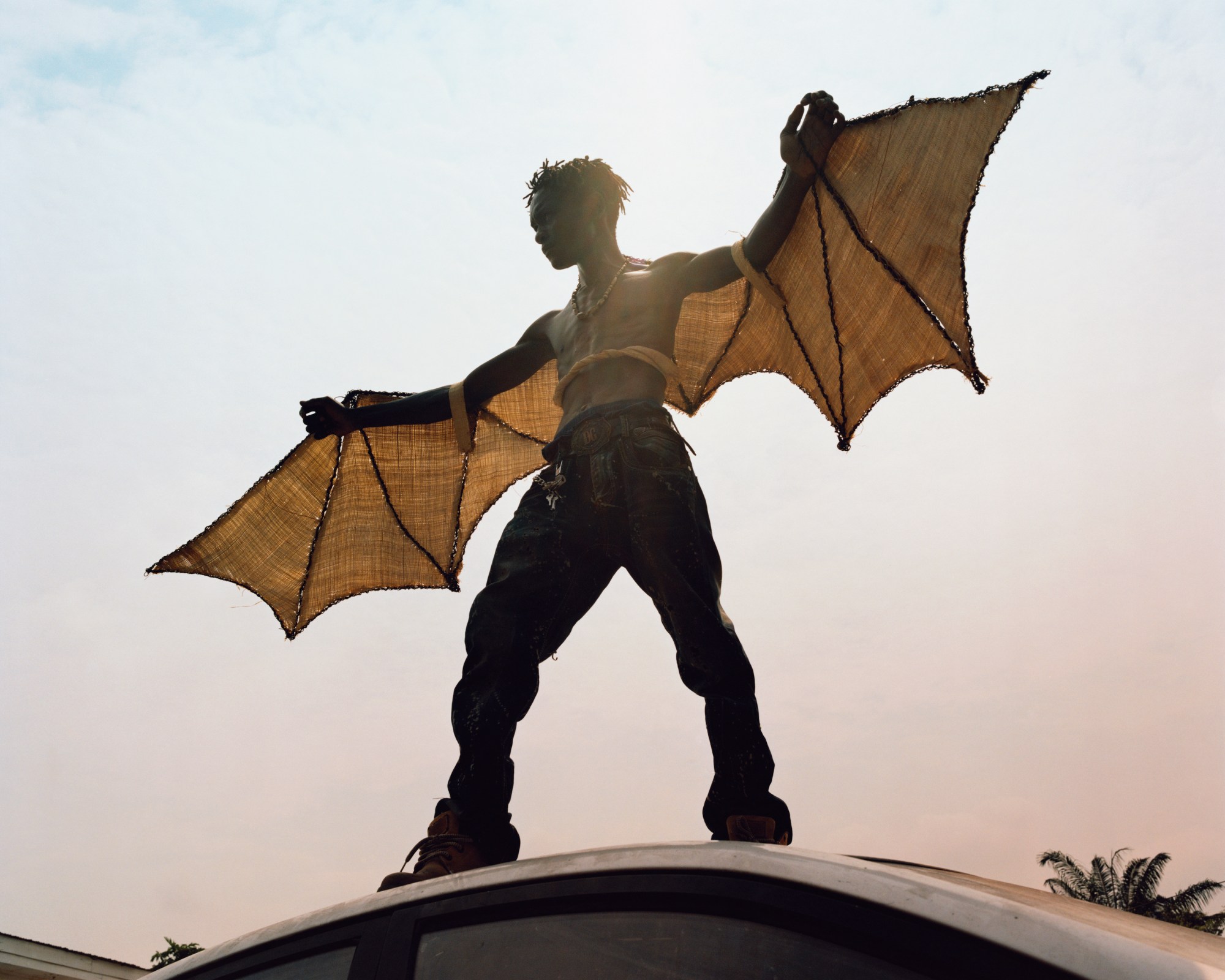
Kyle Weeks / 27 / Netherlands
What’s your earliest memory behind the camera?
Photographing my friends skateboarding back in my hometown in Namibia. We used to spend every weekend roaming the streets, often getting up to no good, crashing house parties, and I used to document these experiences on an old Canon Rebel XT that I pawned off one of my friends. Sadly ,all of those images have been lost along with the drive they were stored on.
What’s inspiring you at the moment?
People and my varied interactions with fellow humans day to day. It could be an observation from a distance, a shared glance, or a moment of conversation with a stranger on a train. I’m constantly reminded by the fact that humanity is a shared experience and that at a base level, we’re all made of the same thing. Knowing that has some sort of profound impact on the way I like to approach making photographs of people.
Tell us about the work you have included in the show.
I’ll be showing six images that are all portrayals of youth in Africa. Photographed on my travels between Cape Town, Accra, and Kinshasa, these works were either documented as moments in time or thought up and then constructed in collaboration with other creatives, like musicians, stylists, costume designers, and models. Shown collectively, they tell a story of vibrant energy, dynamism, and creativity amongst African youth. Having been born and raised in Namibia, my interest lies in themes of representation and in photography’s ability to shape and preserve identity. My role as an African photographer of western descent is to tell a positive story of the continent with as much clarity and conviction as possible. Why would I want to focus on any of those stereotypical stories that we all already know? I think that now more than ever there is a need for new narratives of Africa and I like to believe that I’m contributing toward that. Because that’s the place and people that I know and that I like to see.
What’s one piece of advice that you’d pass along to young photographers?
Give it your all or don’t do it at all. Start with something that speaks to you and make work around that. You have to have a connection to whatever it is that you’re making work about.

Renate Ariadne van der Togt / 26 / G.B.
What’s your earliest memory behind the camera?
Perhaps not the most romantic memory, but very generational nevertheless; my earliest memory of making images was the webcam. I must have been around 11 years old when I started to make self-portraits with that bulky Logitect bulb on top of my parents PC in the living room. It was the first time I realized that a photograph isn’t a perfect document of reality — it’s rather elements of reality reconstructed to show whatever the maker desires.
What’s inspiring you at the moment?
I’m incredibly fascinated by creating dream within reality. I’ve always been able to remember my dreams in the finest detail and it affects the way I look at my surroundings. In my attempts to capture a feeling of magic or surreal in reality, I draw inspiration from magical realist art and film. I still can’t get over Un Chien Andalou a film by Dalì and Buñuel.
Tell us about the work you have included in the show.
The work in the show is a small collection of my most recent work — a mix of heavily constructed images and things I’ve seen the way they are. In a way, it mirrors an idealized world, which is also where the two nudes come from. They’re reflections of my “strong woman,” an ideal I created for myself when I moved to London two years ago.
What’s one piece of advice that you’d pass along to young photographers?
Email. Email. Email. And email people to get other peoples emails. In other words: get yourself out there.
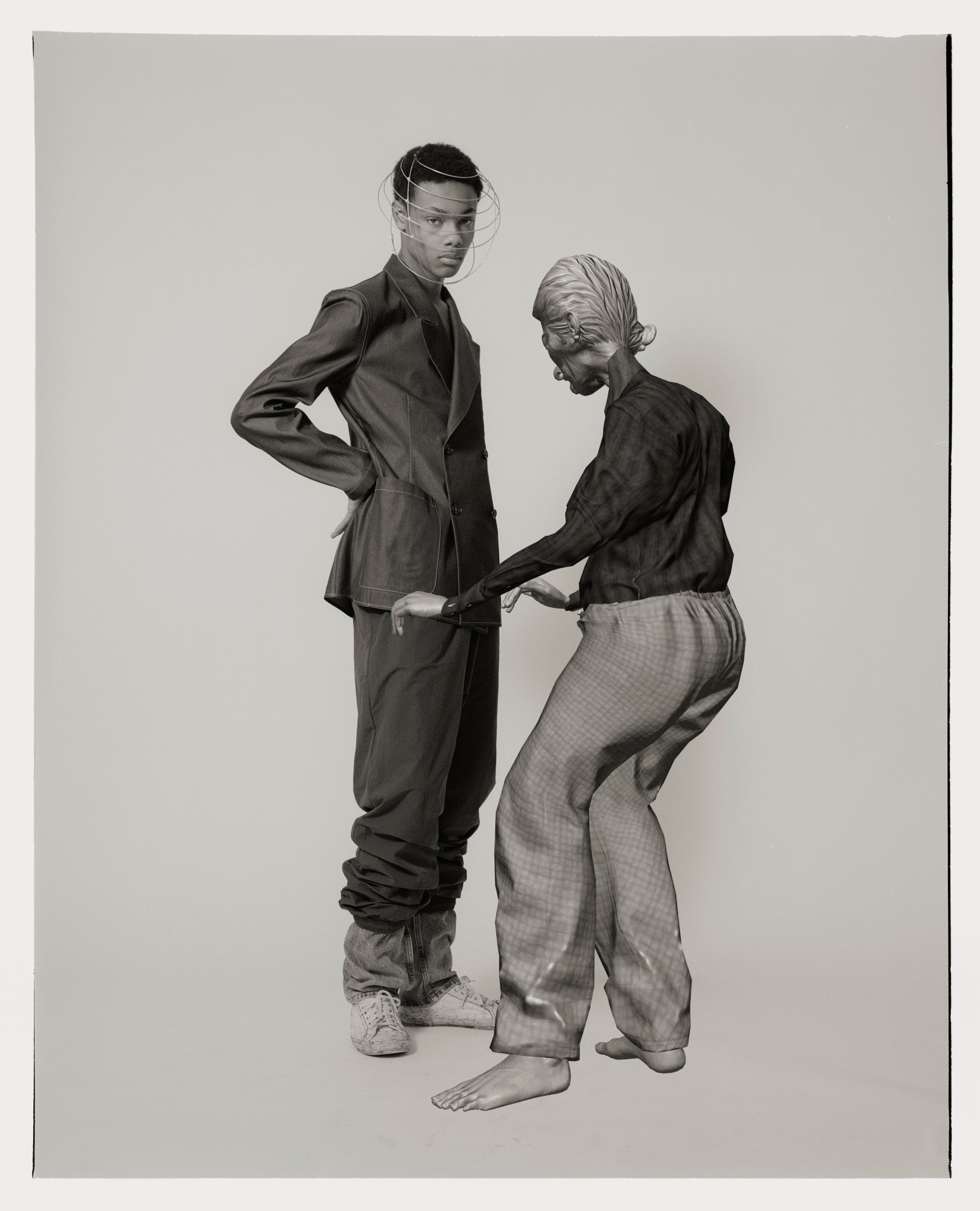
Olya Oleinic / 27 / U.K.
What’s your earliest memory behind the camera?
I grew up in a 37 square meter apartment as a home for four, so use of space had to be practical. My earliest memories are probably spending all day assembling random bits of everything I could find at home into temporary constructions and using the camera to document that, then at night returning all to its place to convert the room from a messy experiment back to a functional space for living.
What’s inspiring you at the moment?
People watching, observing the unaware behaviors. Studying EI. Watching Soviet cartoons. So many things really.
Tell us about the work you have included in the show.
The photographs included in the show are from different bodies of work. If I had to think of the red line throughout, I’d say they are all some form of fabrication meant to speak associatively, based around simple observations, but shaped to differ from its original form or context. I find it interesting to play with the definition of truth within the photographic culture, and possibilities of telling a story without a necessary notion of being an undetachable part of it.
What’s one piece of advice that you’d pass along to young photographers?
Universal wisdoms can be so trivial and mean very little before experienced first-hand, so the only thing I’d say is create your own experiences and think big. Also share, on all levels — intellectually, emotionally, and in substantial forms.

Simon Lehner / 23 / Austria
What’s your earliest memory behind the camera?
I have a super blurry memory in my mind that I took a picture in the garden of my grandfather, but the first time I was really aware that I am behind a camera would probably be in school when I was 14 or so. We had one camera per group of students and we almost had to fight for it on who will take the next picture.
What’s inspiring you at the moment?
It sounds funny, but the year 2005. Right now I am interested in this nostalgic and romanticized feeling of a carefree childhood. Like this whole vibe of summer, freedom, no school, cartoons etc. I think I missed out on that a bit, so I try to find out what triggers this longing for a childhood re-run in me, with my new project that I am working on right now. And of course, because it’s 2005 – Gorillaz Feel Good Inc. – That type of vibe.
Tell us about the work you have included in the show.
The project is titled “How far is a lightyear?“ (2005-2019) and investigates fatherhood, love, and the development of identity through family. We follow the viewpoint of a boy who resembles the state of balancing two conflicting sides, while being stuck in the firing line of a bad love story. Through a method of digitally piecing and reconstructing my father with the images I have, I try to make a portrait of him without physical contact — hinting at the emotional and physical distance and my longing for a father.
What’s one piece of advice that you’d pass along to young photographers?
I am a young photographer myself, so it seems even more cliché to say this now, but – Do what interests and moves you and it will work out eventually. I mean, if you do it for yourself, you will probably have way more joy and endurance in pursuing the things you’re striving for. And write as many emails as possible. Doesn’t matter if they reply or not.
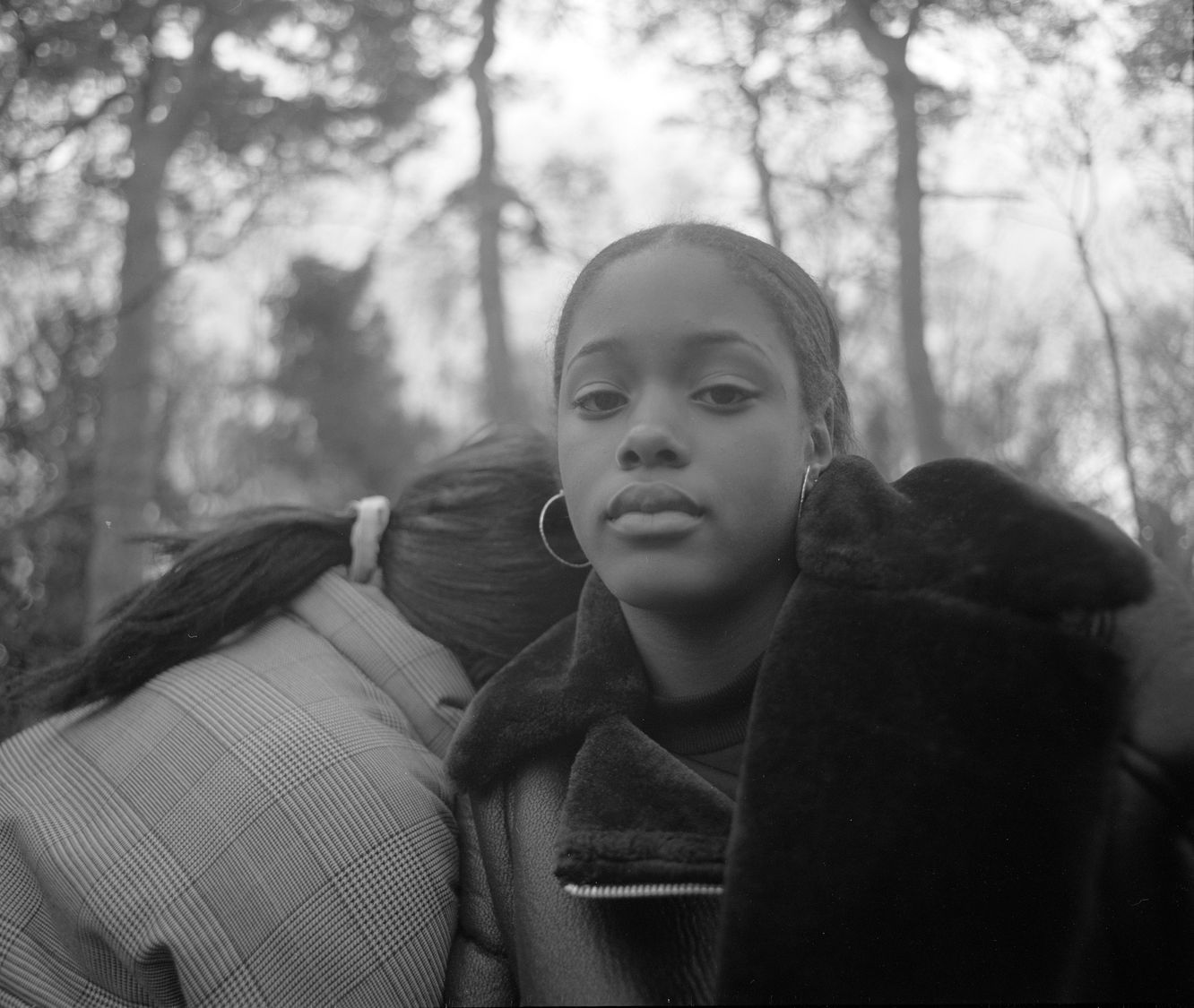
Rhea Dillon / 23 / G.B.
What’s your earliest memory behind the camera?
Taking photos of my friends at our silly drunk from WKD parties in year 8 and everyone pestering me so excited for them to go live on Facebook the next morning. Some iconic moments tbh.
What’s inspiring you at the moment?
That life is about to be the most free its ever been! I graduate next week.
Tell us about the work you have included in the show.
The photos are taken from three different series unintentionally, but create, to me at least, a quite poignant synergy. One photo is from a series called “SISTAHS,” which I shot in the banlieues or suburbs of Paris, in search for an escape from what felt like constant news broadcasts of police brutality and murders in both the U.S. and U.K. at the time. I was also in search of a sense of true girlhood despite the seeming stereotype of girls not supporting each other. Paris is still a very racist place, so it was important and relevant to focus it there within Europe.
Four photographs appear from an initial series I did that lead up to a film called Process (the series and the film have the same name), where I focus on an exploration of opening the narrative of and from within the afro hair wash process. In each photo I paused the girls, including my own hair wash process, to viscerally and literally show that black hair is beautiful no matter what state it is in.
The last two photographs are part of a work in progress. They’re from a series highlighting the middle to upper class black girl breaking down the little imagery that exists of black youth, and the sync of the word I hate the most, ‘urban,’ with black visuals. When was the last time you saw an image of a black girl frolicking in an open field? Freedom is very important in my work and something I want to convey through highlighting blackness.
What’s one piece of advice that you’d pass along to young photographers?
There’s nothing stronger than a gut feeling; trust yourself first always.
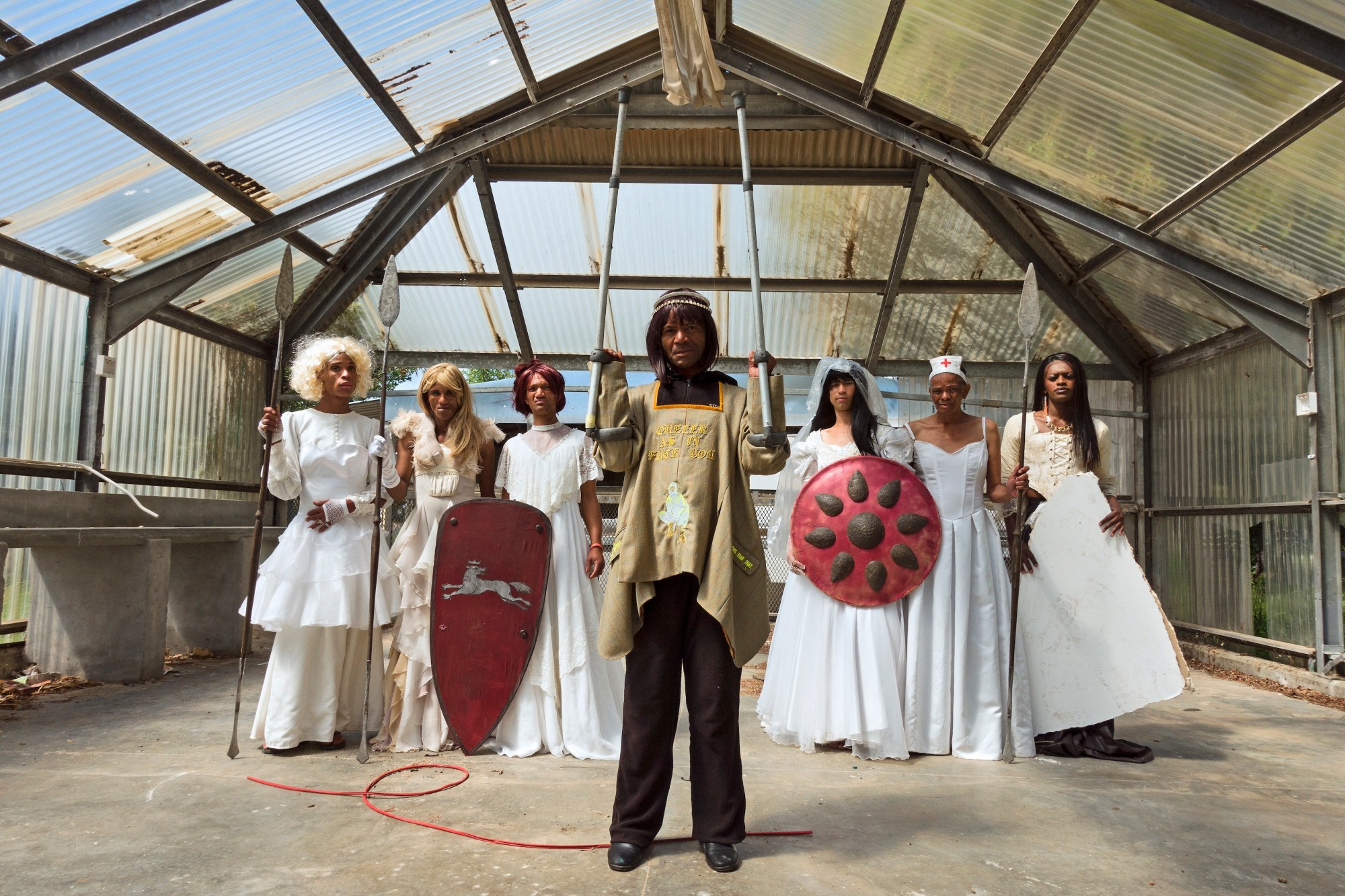
Jan Hoek / 35 / Netherlands
What’s your earliest memory behind the camera?
My earliest memory behind the camera was, I don’t know, I always cared more about meeting people that are a bit hidden and become friends with them and make adventures. It’s only now I have a camera that I can make my work from it.
What’s inspiring you at the moment?
At the moment, I am very inspired by the drawings of people from a mental health institute in Austria that I just visited. I wish I could work with that freedom and dedication.
Furthermore all the Sistaaz, from the Sistaaz of the Castle project really inspire me. Most of them live under a bridge, but everyday they look stunning with clothes they make themselves from things they find or get. They also make mobile gardens from shoes and footballs, because when the police send them away, they can easily take their gardens with them.
Tell us about the work you have included in the show.
I show the project Sistaaz of the Castle, a close collaboration with SistaazHood, a trans sex worker support group from Cape Town, and designer Duran Lantink (who made Janelle Monae’s infamous vagina pants). A publication of this project will be released a few days after the Red Hook Labs opening. The photo series is an activistic mix between documentary and more fictional fashion photography. The real lives of the Sistaaz will be mixed in the publication, exploring their dreams and fantasies.
The most radical thing in this collaboration is that we really have shared ownership with the girls from SistaazHood, so if a picture gets sold, they get the same share from it as Duran and me. They also made pictures themselves and designed clothes for them.
What’s one piece of advice that you’d pass along to young photographers?
If somethings scares you, then you know you are on the right track.

Paul Guilmoth + Dylan Thomas Healy Hausthor / 26 / 25 / U.S.
What’s your earliest memory behind the camera?
Paul: The green-ish matter resting on the surface of a swamp, moving the viewfinder in and out of focus; the ability to isolate parts of a whole.
Dylan: I have an embarrassingly poor memory, a fact that my therapist has been quick to connect to the fact that I take pictures every day. Perhaps it was photographing in my mother’s garden and overexposing everything by eight stops. Or maybe videotaping my feet with a VHS camera.
What’s inspiring you at the moment?
Paul: Finding large Dobsonfly larvae living under a rock in the river, and a spider that weaves a cobweb underneath its orb-web.
Dylan: I saw a woman preaching the gospel on a dock on a pond. She got so riled up that she took a step too far back and fell in the water.
Tell us about the work you have included in the show.
Dylan + Paul: The images in the show are from “Sleep Creek,” a long-term project that is somewhere between collaboration and mutual inspiration between the two of us. It’s a project about storytelling, the northeast of America, small towns, field recordings, and myth.
What’s one piece of advice that you’d pass along to young photographers?
Paul: Bring extra batteries for your flash and flashlight.
Dylan: Well, I feel like I am a young photographer still looking for advice. That said though, bring an extra pair of socks to your shoot.
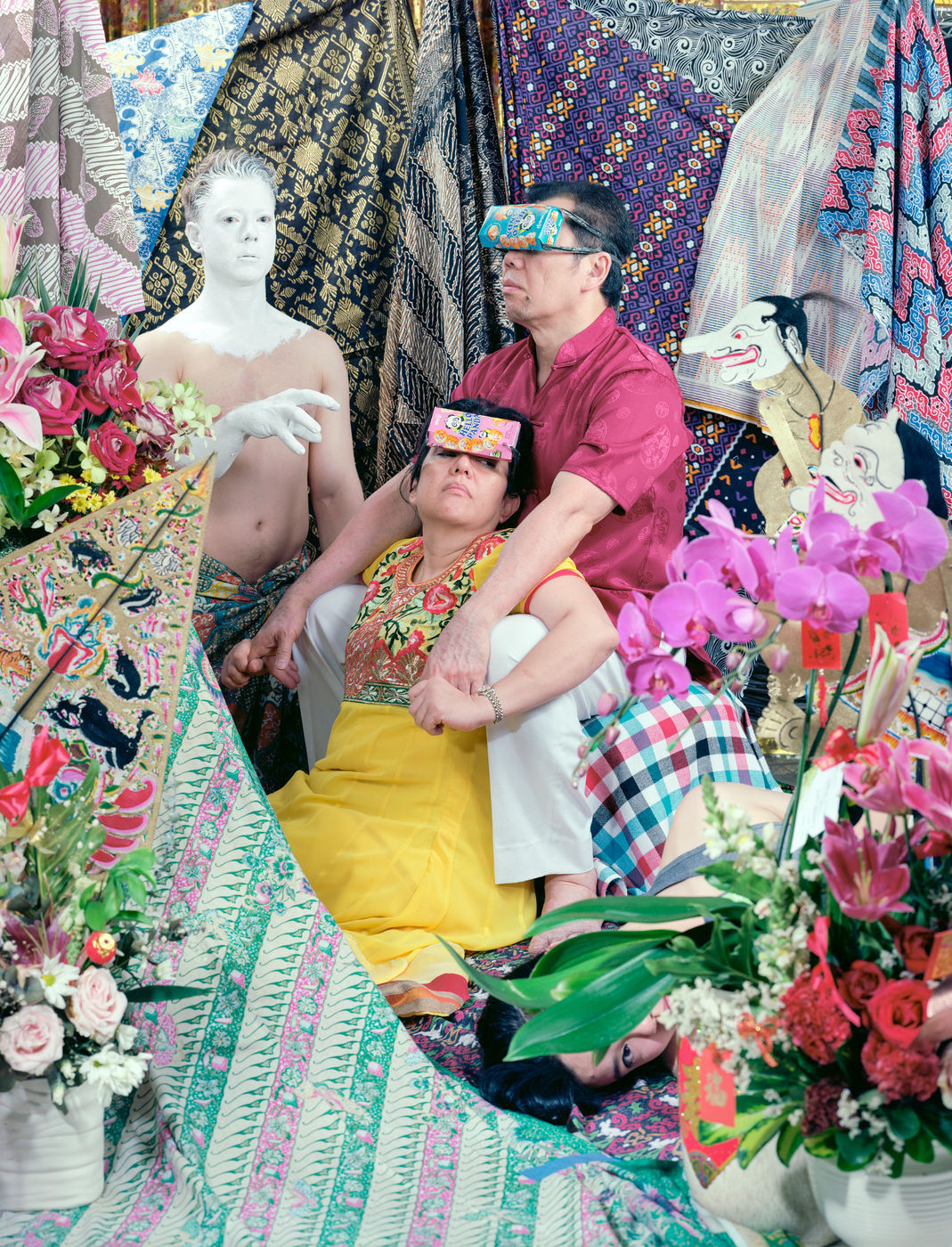
Leonard Suryajaya / 30 / U.S.
What’s your earliest memory behind the camera?
I got my own plastic toy camera when I was about seven. My parents were really cheap and wouldn’t get me film to go along with it, so I exhausted my imagination when I played with it. Mind you, I am 30 now. There was not even a flip phone at that time in Indonesia.
What’s inspiring you at the moment?
My shingles, Tyler, the Creator’s IGOR, Madonna’s Madame X, Lizzo, Frank Ocean. Lana Del Rey, Always.
Tell us about the work you have included in the show.
There are three photos in the show, all of which trace the initiation process of my white partner to my family, culture, and home country, Indonesia. The topic of my sexuality is nonexistent in my family. When I came out to my mom five years ago, she told me not to tell my dad. As a super minority both in my home country and America, I refrain from speaking about my immigration process to America through same sex marriage to ensure them no harm. With the increasing conservatism in Indonesia, I would get forwarded these insensitive, false, and bigoted posts about homosexuality on WhatsApp from my aunts. Like the ones that say homos are diseased, sick in the head, and morally inferior. So naturally, it is up to me how I use my art to forge a sense of relationship and make hopeful renderings of my experiences, without disregarding the backwardnesses placed on my selfhood.
What’s one piece of advice that you’d pass along to young photographers?
Strive for excellence and consistency, not perfection. To all you colored, queer, minority creative individuals, all that you are is valid. Your triumphs, adversities, and individuality matter in the way you shape your own unique visual language. Time is your friend and don’t get bullied by inadequate and impatient professors or peers in actualizing your full potential. Like what RuPaul says, “You’ve got to know who you are, and deliver that at all times.” To all you privileged straight cis male of the majority race/culture, wherever you are, “You need to step your pussy up.” We don’t need a lousy ally.
